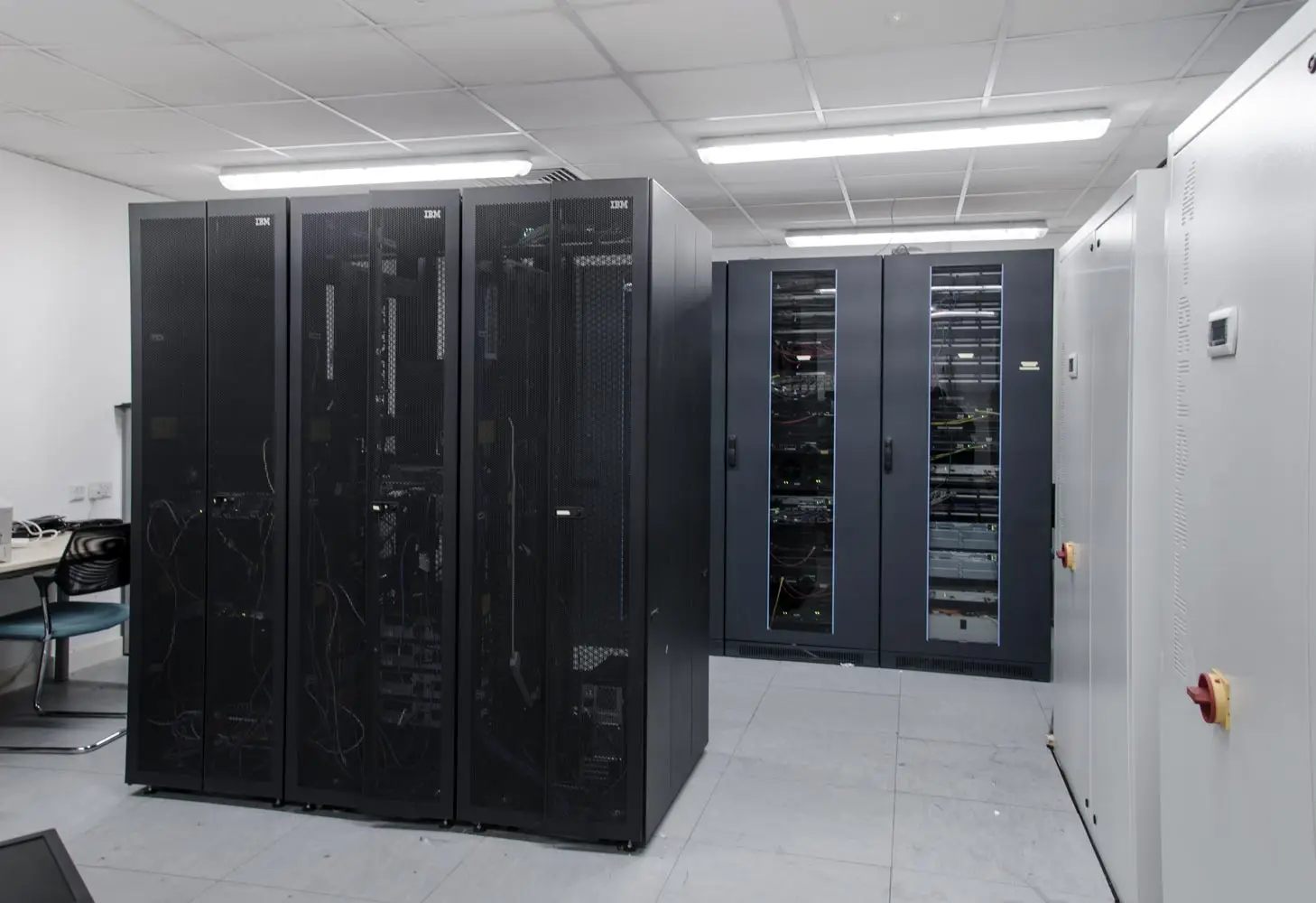Data Halls
Data halls usually use a hot aisle/cold aisle layout. In its simplest form, this design involves lining up server racks in alternating rows with cold air intakes facing one way and hot air exhausts facing the other.
The ambient temperature in cold aisles is usually between 15–30°C, while in hot aisles, it may be between 20–40°C. Designers must carefully select the correct luminaires to cope with the thermal environment. Technicians require good levels of vertical illumination to work on computer racks; specifications vary between 200 lux and 500 lux a metre above the floor, with similar vertical values on the racks.

Choice of Luminaire
Surface luminaires, often mounted on lighting trunking, are commonly used in server aisles. Optical performance is important because the work surfaces are vertical, so luminaires with a wide distribution pattern should be used.
Many data halls have alternate hot and cold aisles. In cold aisles, the ambient temperature is between 15 – 30°C, whilst in the hot aisles it may be between 20 – 40°C.
Luminaires with metal bodies are better for heat dissipation. Suitable products include A-Line, Kanby Evo, Kanby Max, Kanby Pro, Kanby Zip, Zipline.
Please contact your local sales engineer or the technical helpline for more information.
Illumination Levels
There is very little guidance on lighting levels for server aisles and many end users will have their own specifications. In general, good vertical illumination is required for technicians to work on computer racks, so specifications typically vary between 200 lux and 500 lux 1 m above the floor, with similar vertical values on the racks.
SmartScan Lighting Management
Lighting is only needed when technicians need to work on the racks, but all too often large areas are left lit continuously.
In all cases highly efficient lighting, coupled with an effective presence based control system, such as SmartScan Internal can be very effective at reducing costs.
SmartScan provides automatic energy saving control, but also allows technicians to select a higher than normal lighting level when undertaking critical tasks. Additional features, such as Occupancy Profiling and Air Quality Monitoring may also be beneficial.
Find out moreSmartScan Internal
SmartScan Occupancy Profiling
Emergency Lighting
A Risk Assessment is needed to determine where emergency lighting is needed. The main escape routes should be illuminated to 1 lux.
In areas with high ambient temperatures, non-maintained emergency luminaires are preferred because the batteries are kept cooler. Suitable luminaires include Firefly Surface, Firefly Plus Surface, Duo-Spot and Lexi exit sign.







